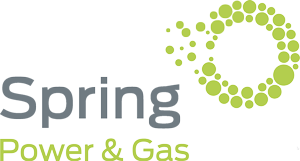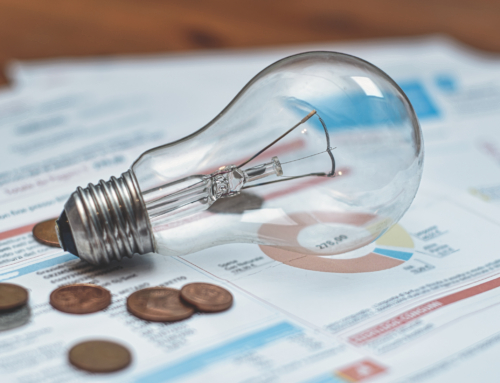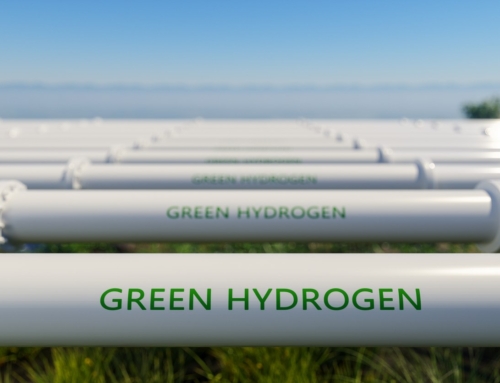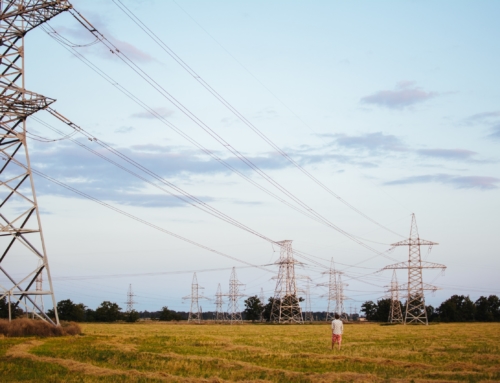As global energy demand rises, so does the need for sustainable power solutions like hydro, solar, geothermal, bio, and wind. In the U.S., renewable energy surged 42% from 2010 to 2020 and an impressive 90% from 2000 to 2020. By 2022, renewables comprised 21.5% of U.S. electricity, with wind leading at 10.2%. Recognizing the societal, environmental, and economic benefits of wind power, the U.S. Department of Energy’s Wind Vision Report aims for wind to supply 20% of U.S. energy by 2030 and 35% by 2050. Offshore wind power is critical to making that vision a reality.
As the U.S. expands its offshore wind capabilities, integrating other renewable technologies, such as green hydrogen, is crucial. The importance of green hydrogen lies in its ability to store excess energy generated by wind farms, ensuring a stable and reliable energy supply even when the wind isn’t blowing.
What Is the Meaning of Offshore Wind Power?
Offshore wind power generates electricity by harnessing the wind’s kinetic energy using turbines located in bodies of water, typically the ocean. Unlike onshore wind farms, offshore wind farms are situated in open water, on seabeds up to 160 feet deep.
Offshore turbines can be larger and taller than their onshore counterparts, capturing stronger winds more effectively. They’re also more socially acceptable because they are erected far away from populated areas (typically 10 and 50 miles from the shore), where they have less visual and noise impact. Moreover, their locations benefit from consistent wind speeds, producing more energy.
Offshore wind power also underscores the importance of green hydrogen. The surplus electricity from offshore wind farms can be used to produce green hydrogen, offering a sustainable way to store and transport energy.
How Offshore Wind Turbines Work
At a distance, offshore wind turbines look like giant flowers blooming in the ocean. Their large blades spin gracefully in the wind, like petals catching sunlight. They are truly marvels of modern engineering.
The technology behind these turbines involves several key components working in unison. The primary parts include the rotor blades, nacelle, tower, and foundation.
Offshore wind turbines typically have three massive blades, each spanning over 200 feet long, designed to capture wind energy. The blades are connected to a hub attached to the nacelle (the core of the turbine), which holds the generator and other critical parts.
The tower of an offshore wind turbine is about 320 feet tall (that’s taller than the Statue of Liberty), elevating the nacelle and blades to heights where the wind is stronger and more consistent.
The foundation anchors the turbine firmly to the seabed, keeping it stable even in rough marine conditions. When the wind blows, it spins the rotor blades, and the rotational energy is transferred to the generator inside the nacelle through a series of shafts and gears. The generator then converts the mechanical energy into electricity. The electricity travels through underwater cables to the shore, joining the power grid. This sophisticated process allows offshore wind turbines to generate large amounts of clean, renewable energy.
How Long Do Offshore Wind Turbines Last?
Offshore wind turbines have an average lifespan of about 20 to 25 years. However, harsh marine environments, saltwater corrosion, and strong winds can influence their longevity. Regular maintenance, including routine inspections, cleaning, and replacing worn-out components, is essential to keep the turbines functioning optimally and reaching their maximum usage capability.
To maximize each turbine’s lifespan, they’re designed with advanced monitoring systems, such as temperature sensors, strain gauges, and accelerometers, that detect temperature irregularities, bearing faults, gear tooth failures, and other issues for timely repairs.
Benefits of Offshore Wind Power
The U.S. plans to continue investing heavily in offshore wind power for these main reasons: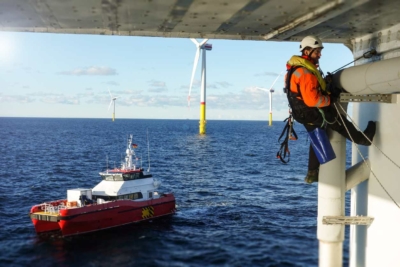
- Environmental Benefits:
- Significantly reduces carbon emissions.
- Decreases reliance on fossil fuels, leading to cleaner air and a healthier planet.
- It can be designed to preserve natural habitats, minimizing disruption to marine life.
- Economic Benefits:
- Creates thousands of jobs in manufacturing, installation, and maintenance.
- Boosts local economies.
- Enhances energy independence by providing a reliable, domestic source of electricity.
- Reduces dependence on imported fuels.
- Technological Advancements:
- Modern turbines are more efficient than ever.
- A single large offshore turbine can power up to 4,000 homes.
Challenges and Solutions for Offshore Wind Power
Offshore wind power has challenges, too. High construction costs, complex maintenance, and environmental impact are a few. The initial investment for installing offshore wind farms is substantial, costing tens of millions of dollars.
Ongoing maintenance in harsh marine environments is also costly, averaging between $42,000 and $48,000/megawatt during the first 10 years of operation. Furthermore, the turbines disrupt marine habitats and increase ocean noise, potentially affecting the behaviors of fish, whales, and other aquatic animals.
However, innovations are helping mitigate these challenges. For example, advancements in floating turbine technology reduce the need for fixed foundations, lessening seabed disturbance. Enhanced maintenance techniques and remote monitoring systems also improve efficiency and reduce costs.
Successful projects, like the Hywind Scotland floating wind farm, demonstrate how technological advancements can overcome the environmental hurdles.
Spring Power and Gas Provides Renewable Energy
More and more people recognize the importance of green hydrogen and renewable energy sources like wind power. At Spring Power & Gas, we play our part in the renewable energy revolution, offering customers sustainable energy options.
Choose between our Spring Green and Zero Gas plans. Once you become a Spring Power & Gas customer, you join our Rewards program, earning $25 in Rewards Dollars monthly. These rewards can be used to unlock deals, discounts, and savings. Contact us today to learn more.
